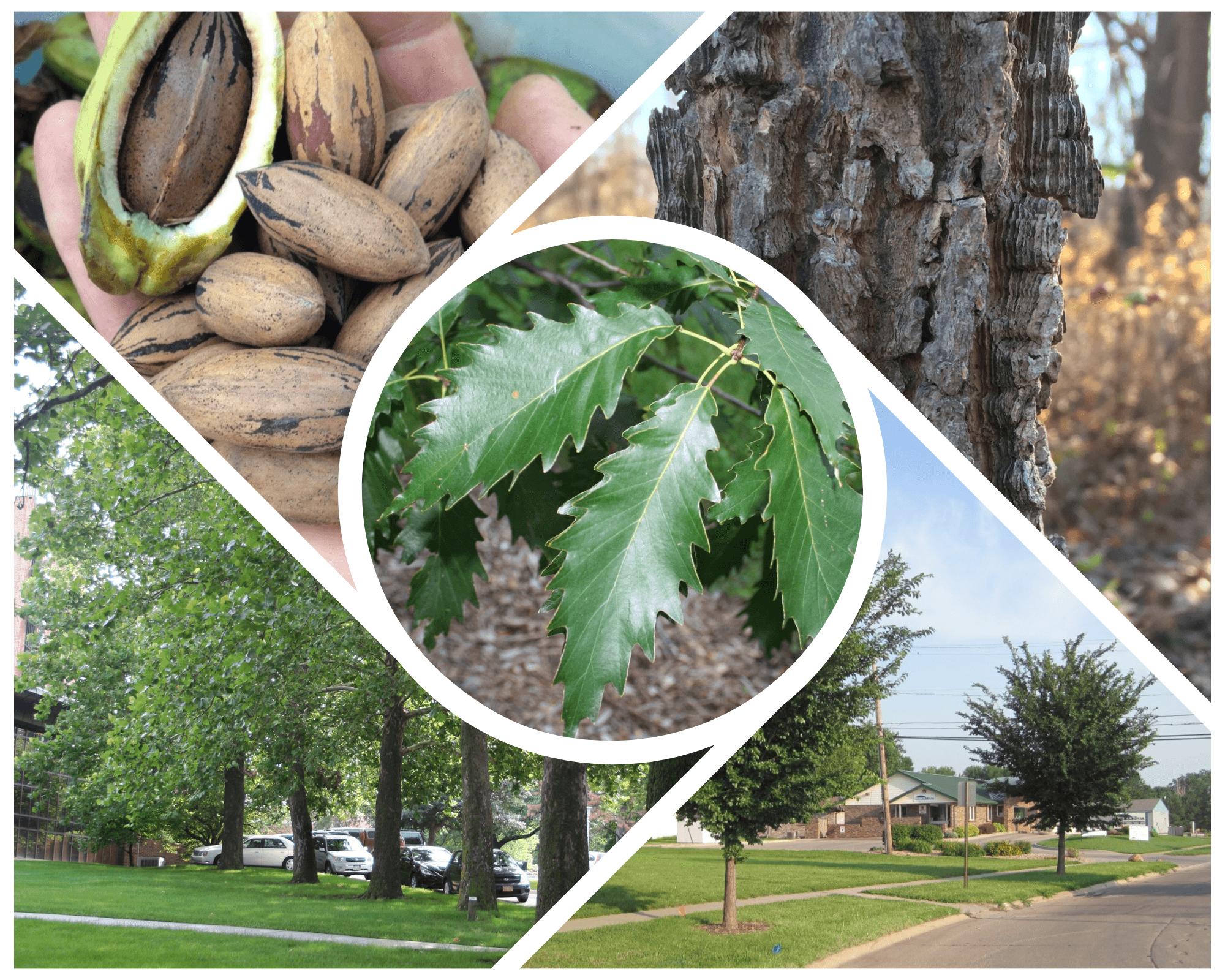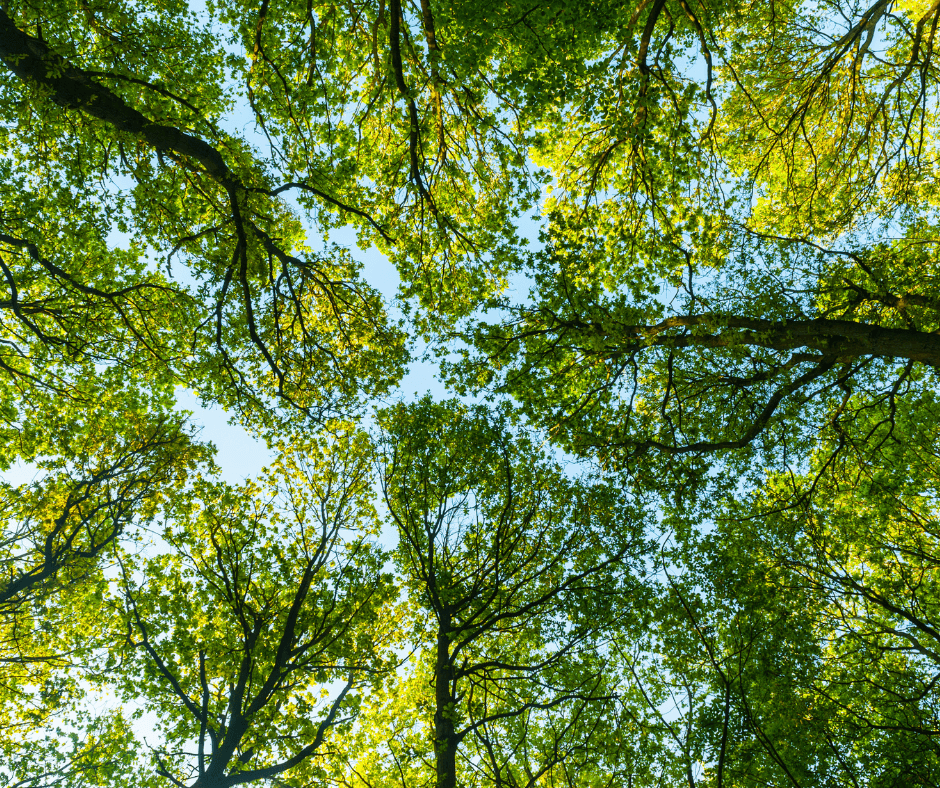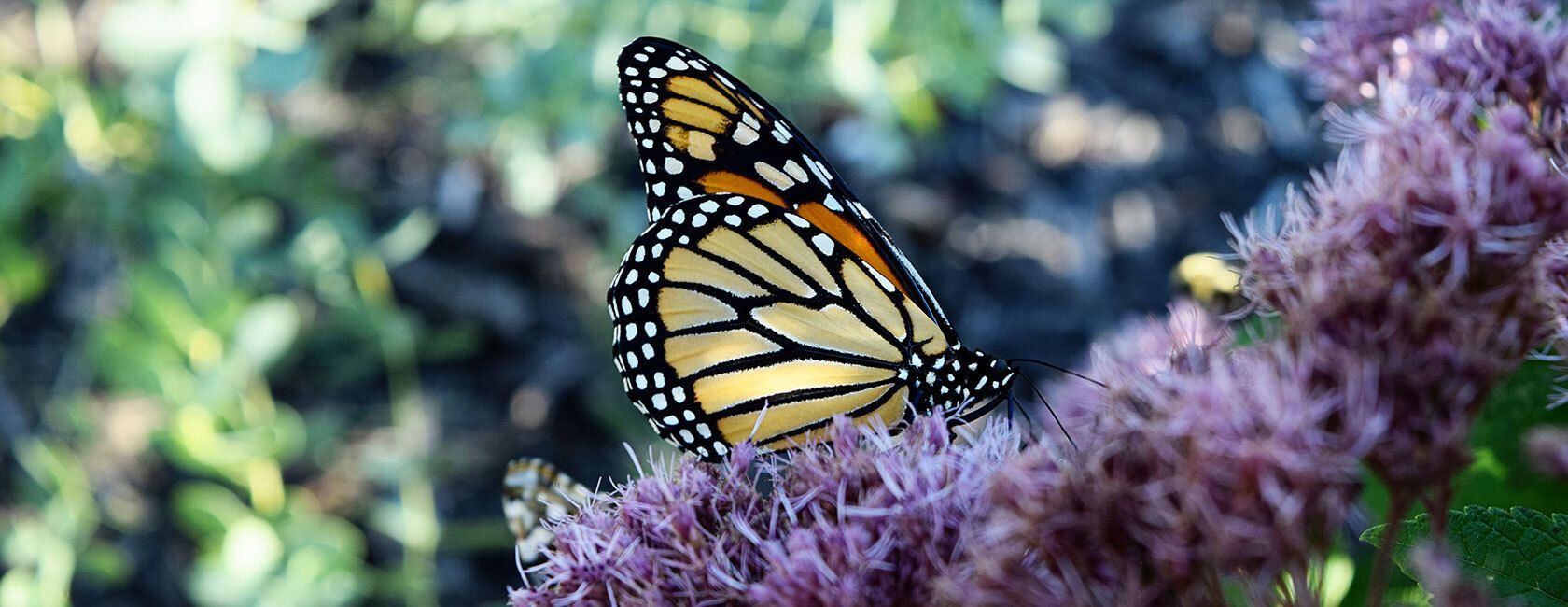
Photos clockwise from top left: pecan nuts, hackberry bark, young Triumph elms, sycamore trees and (center) chinkapin oak leaves.
Planting a tree is always a great idea, but it's also wise to put some thought into the tree selection process before you make your purchase. NSA Green Infrastructure Coordinator Justin Evertson put together this list of five underutilized trees he recommends for planting. They may not be the first trees that come to mind as you consider what to plant in your yard, but the following species are all well-suited to eastern and central Nebraska's climate and growing conditions and, in our opinion, should be planted more.
Pecan (Carya illoinensis)
The largest of the hickories, the pecan tree matures at 50-70’ tall and 40-50’ wide and develops a lovely shape over time. Fast-growing and surprisingly drought-tolerant, the pecan’s solid branching habit also makes it resistant to storms and ice damage.
The sweet, edible nuts, which mature in September and October, make pecan the best hickory for fruit production. The husks usually dry and split open naturally as the nuts ripen. The nuts are also valued by wildlife, and the tree is larval host to a number of moths and other insects that eat the foliage. In its natural habitat you'll typically find pecan trees in wooded bottomlands and along stream banks. It prefers full sun and moist, rich, well-drained soils and can tolerate a variety of soil types, from sandy to medium loam to clay loam.
Chinkapin oak (Quercus muehlenbergii)
A member of the white oak family, chinkapin oak is native to the southeast part of the state but is "woefully underutilized," according to Evertson, who values it for its adaptability across the entire state. This fast-growing oak can put on 12-24 inches a year, maturing at 50-60 feet tall and 20-40 feet wide. The leaves are coarsely toothed (but without bristle tips), smaller than most other oak leaves and a deep, glossy green (lighter green on the undersides). Young trees retain a pyramidal shape which over time turns into a more rounded crown.
Chinkapin oaks prefer full sun and are very tolerant of alkaline (high pH) soils. In their natural habitat, they are often found in dry limestone outcrops. Though this oak thrives best in rocky or sandy soils, it adapts well to most well-drained soil types. Chinkapin is larval host to the gray hairstreak moth and also attracts a variety of birds--including hummingbirds--and butterflies. It makes a great shade tree and turns a lovely shade of yellow in autumn.
American sycamore (Platanus occidentalis)
A beautiful, stately tree that is easy to grow in much of Nebraska, American sycamore's reputation as a “messy tree" (in older trees, the bark tends to slough off in scales, revealing smooth, white bark underneath) means it’s not planted nearly as often as it should be. Tough, resilient and versatile, the sycamore has a lot to offer (beware that it’s marginally hardy in western Nebraska, though it has been known to thrive there as well).
If you have the space for it (it grows to a height of 75-100 feet with a width of 50-70 feet), sycamore is worth planting as a beautiful shade tree with a lovely, broad canopy. It also has unique mottled bark and interesting spherical fruits. You’ll also get your money’s worth with this tree, as sycamores typically grow fast and live upwards of 200 years or more.Sycamores are pretty versatile when it comes to growing conditions. They do well in full sun, part shade or full shade. They do like moist soil, but can also thrive in sandy loam or silty clay soils.
Triumph elm (Ulmus 'Morton Glossy')
In the wake of Dutch elm disease, a fungus that has killed an estimated 50-100 million elms since it arrived in North America in the 1920s, many homeowners are understandably skittish about planting elm trees. However, there are a number of Dutch elm disease-resistant elms available now, among the best of which is Triumph elm. Fast growing, with relatively good structure to resist storm damage when properly trained, and an appealing vase-like shape when it matures, Triumph will grow 50-80 feet tall and 40-60 feet wide.
Easily transplanted, quick to establish and adaptable to most soil types, this lovely elm offers lush, summer foliage that gives way to a golden yellow fall color. Once established, it will tolerate periods of drought. Equally well-suited for home yards, commercial landscapes, parks or as a street tree (it handles urban pollution well), Triumph elm is definitely a versatile tree and one to consider as you plan your next tree planting.
Hackberry (Celtis occidentalis)
This tree provokes big feelings around NSA. Hackberry is both loved (Justin Evertson claims it as his favorite tree) and hated (read Hanna Pinneo's blog post on why she hates hackberries). Love 'em or hate 'em, one thing everyone can agree on is that hackberry is an ideal tree to plant as we face the increasing impact of climate change. Resilient, tough and very drought-tolerant, with a lovely shape and great shade canopy, hackberry is also very tolerant of herbicide drift and is able to withstand Nebraska's strong winds and winter storms.
Hackberry matures at 40-60 feet high with a canopy spread of 40-50 feet. It thrives in both full sun and partial shade and prefers alkaline soil that is moist and well-drained, but can also tolerate clay, dry conditions, road salt and occasional flooding. Its prolific, berry-like fruit, which stays on the tree throughout much of the winter, provides ample food for a variety of birds.
For more tree recommendations, tree planting tips and other useful information, visit our Resources webpage.


